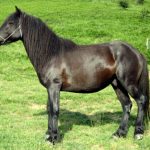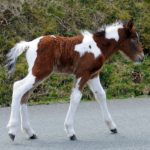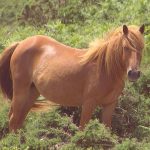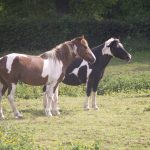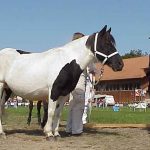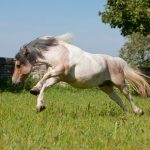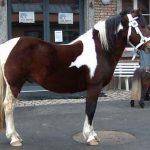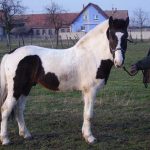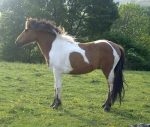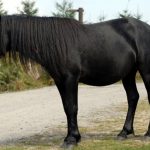Pottok (Basque Pony)
Found in the Pyrenees mountains of Basque Country, the Pottok is an ancient breed of semi-feral ponies that are well suited to living in the harsh conditions of their natural habitat. Its native range extends from the Biscayan Encartaciones in the west to the Saint-Jean-le-Vieux area in the east. A significant decline in their historic population was highlighted in 1970 when a study found 3,500 purebreds to the north and 2,000 purebred Pottoks to the south of the Pyrenees.
Pottok (Basque Pony) Pictures
- Basque Pony
- Pottok Foal
- Pottok Horse
- Pottok Images
- Pottok Mare
- Pottok Pictures
- Pottok Pony
- Pottok Stallion
- Pottok
- Pottoka
Quick Information
| Other Names | Pottock, Pottoka, Basque Pony |
| Temperament / Personality | Kind, docile, gentle, willing, shy, intelligent; live in territorial herds comprising 10-30 mares |
| Physical Characteristics | Large, heavy, somewhat square head; long back, short neck, small ears; short, slim legs; small, sturdy hooves; has heavy winter fur reaching up to 10 cm in length |
| Colors | Brown/chestnut, black, bay, pinto |
| Height (size) | Mountain Pottok: 11.1-13.0 hands (112.8-132 cm, 44.4-52 inches)
Plains Pottok: 11.3-14.2 hands (114.8-144.3 cm, 45.2-56.8 inches) |
| Weight | 661-772 lb (300-350 kg) |
| Common Uses | Used earlier as pit ponies and circus horses, as well as by smugglers; now used as riding, competition, and performing ponies |
| Health | Healthy breed without any specific issues |
| Feeding/Diet | Forage including hay and grass; concentrated sources of energy such as grain should be removed; treats such as carrots and apples should be avoided |
| Distinguishing Traits | Highly robust, enduring, adaptable, even tempered |
| Country of Origin | France and Basque Country, Spain |
| Ancestors | Magdalenian horses |
| Breed Associations/Registries | “Les Haras Nationaux (France)”, “Schweizerischer Verband fur Ponys und Kleinpferde; Federation Suisse des Poneys et Petits Chevaux”, “Ingurumen, Lurralde Plangintza, Nekazaritza Eta Arrantza Saila; Departamento de Medio Ambiente, Planificacion Territorial, Agricultura y Pesca” |
Pottok Basque Pony Video
History and Development
Very little is known about the Pottok’s origin though some believe that their origin can be derived from the horses appearing in the Paleolithic cave paintings in Basque Country. Therefore, it is claimed that these ponies have descended from the ancient Magdalenian horses. Others think that horses from the Bronze Age influenced the breed. However, no scientific evidence has to date confirmed these theories.
Although genetic studies have revealed their similarity to breeds including the Monchino, Landais, Galician, Losino, and Asturcon horses, there are significant genetic differences between the Northern and Southern Basque Country populations. At the beginning of 20th century, crossbreeding resulted in the development of piebald ponies for circus use and stockier ponies for draft work. Moreover, crossbreeding with Welsh ponies, Iberian, and Arabian horses significantly reduced the population of purebred Pottoks.
Since 1970, two studbooks have been maintained for the official recognition of the breed. They separate the ponies into two categories, covering the crossbreeds with a minimum 50 percent Pottok blood under Book B while the ponies with higher purity are covered under Book A. Several conservation efforts including the set up of reserves – ZAPE Society (located in Aralar Range) and Bidarray (located in Lower Navarre) have been made.
Interesting Facts
- Pottokas are displayed at both town festivals and agricultural shows in Zumarraga, Markina-Xemein, and Espelette municipalities and communes.
- Pottoka is the official mascot of Aviron Bayonnais, a French rugby club from Bayonne.
- These ponies featured in the 1938-movie Ramuntcho, which was directed by Rene Barberis.


